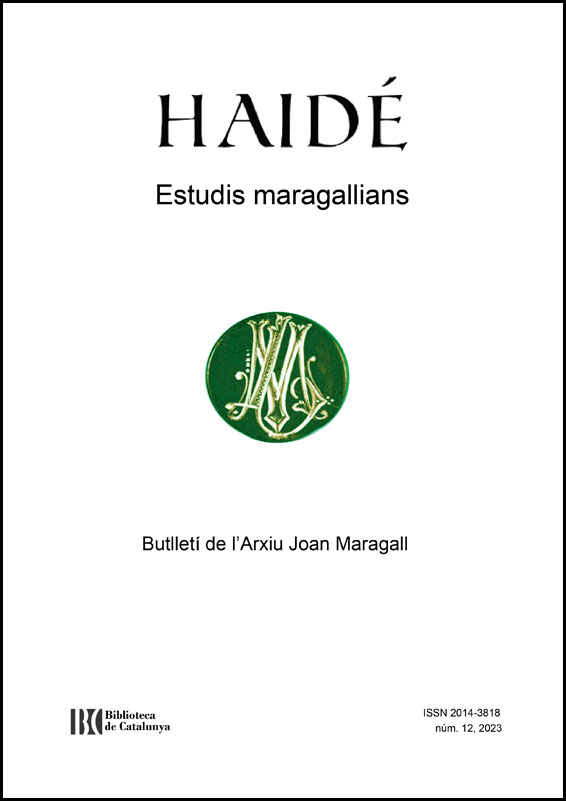Joan Maragall in English: Afterlives, “sur-vival” and retranslation
Article Sidebar

Main Article Content
This article traces and analyses Joan Maragall's poetic legacy in English via a consideration of the ways in which his works have been translated and retranslated (with certain poems, such as the "Cant espiritual" and "La vaca cega" having merited multiple versions) over the past hundred years. Through a chronological survey of translations from the 1920s up to the most recent anthologies by Michael Odon (Count Arnau & Other Poems, 2017) and Ronald Puppo (One Day of Life is Life, 2020), I set out to uncover the version of Maragall that was able to travel in each period, as well as establishing and elucidating the particular interpretations of his work found in each of the nineteen different translators, reading each of the different versions as events in translation history. This is followed by closer theoretical analysis from the perspective of recent debates in retranslation history, drawing in particular on deconstructive readings of Walter Benjamin's "Task of the Translator" that posit the need to go beyond narratives of teleological progress to consider the relationship between the original and subsequent translations in terms of afterlives, sur-vival, differance and textuality. The article ends by placing translations of "L'oda infinita", El Comte Arnau and the "Cant Espiritual" in dialogue as retranslation constellations that provide multiple insights into the Maragallian text.
Article Details
(c) 2024